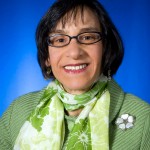 Barbara Resnick, PhD, CRNP
Barbara Resnick, PhD, CRNP
Professor
Sonya Ziporkin Gershowitz Chair in Gerontology
University of Maryland School of Nursing
A cancer diagnosis, particularly a second cancer diagnosis, is difficult at any age. Bordering on being a geriatric patient (in Maryland older adults are defined as those 55-years-old and older), I was diagnosed with my second cancer. The first one was 18 years ago when, at the age of 41, I learned I had breast cancer.
At that time, with teenage children and much of life (hopefully) ahead, the decision was not so much whether or not to go for treatment but rather what treatment to endure….the options for me being removal of all breast tissue (also known as a) mastectomy with the possibility for reconstructive surgery, as well as chemotherapy (the medical term used for treating cancer with special types of medications). The chemotherapy was actually based on clinical research into effective options for my type of cancer. A researcher at heart, I of course consented to that study—and 3 others!
Almost twenty years later I was faced with a new decision around a second cancer and whether or not to undergo a diagnostic workup, pursue treatment, or to crawl into bed and call Hospice (a type of supportive healthcare given to people with serious or terminal illnesses). I started developing difficulty swallowing, and after being diagnosed by multiple providers with a digestive disorder known as gastroesophageal disease, I finally was sent for an Esophagogastroduodenoscopy (EGD, or a procedure to diagnose and treat problems in your upper gastrointestinal tract).
I was told, quite bluntly, I had esophageal cancer. I was neither a smoker nor a drinker and had no risk factors short of a very strong familial history with both parents having multiple malignancies. Decisions needed to be made this time, as I was not particularly anxious to endure treatment and worried about what we see all too often in geriatrics: treatment just making things worse.
On the flip side, my quality of life was not particularly pleasant given that I couldn’t eat or engage in the social activities that go with eating (going to dinner meetings or lunches, going out socially, etc.). I had significant pain and gastroesophageal symptoms associated with the tumor and I feared what death would be like if I let nature take its course. I wrestled with that thought along with my age, almost 60, and the value of using health resources on me at this point in time.
I further wondered how I could progress toward the end-of-life (aside from starving to death), since I was otherwise healthy—a lifelong vegetarian, runner, far from even a moderate drinker, and a non-smoker. Weighing the pros and the cons, I did follow medical advice and the push of family, friends, and colleagues, and I connected with an oncology group that has expertise in esophageal cancer.
Additional decisions needed to be made as I went through a work up for metastatic disease (which refers to a cancer that has spread beyond the original tumor), as initial scans showed a spot on my liver. Pending the results of this additional testing, I would need to decide if I would pursue palliative treatment, or healthcare focused on helping me manage pain. For anyone who has gone through this period of limbo or has friends and relatives that have to endure it, you know what I know: it’s extremely difficult.
I knew (having been through chemotherapy before) that I was not going to consent to palliative treatment, so I made a decision, engaged my resources (I have a daughter who is a nurse!), and planned for a death with dignity. I might add I cleaned closets, organized who would teach my summer course, and took over several ongoing and some new research studies, as well. I decided, took charge, and planned in the event that the spot on the liver was confirmed as metastatic disease.
(Stay tuned for Part 2 next week.)
